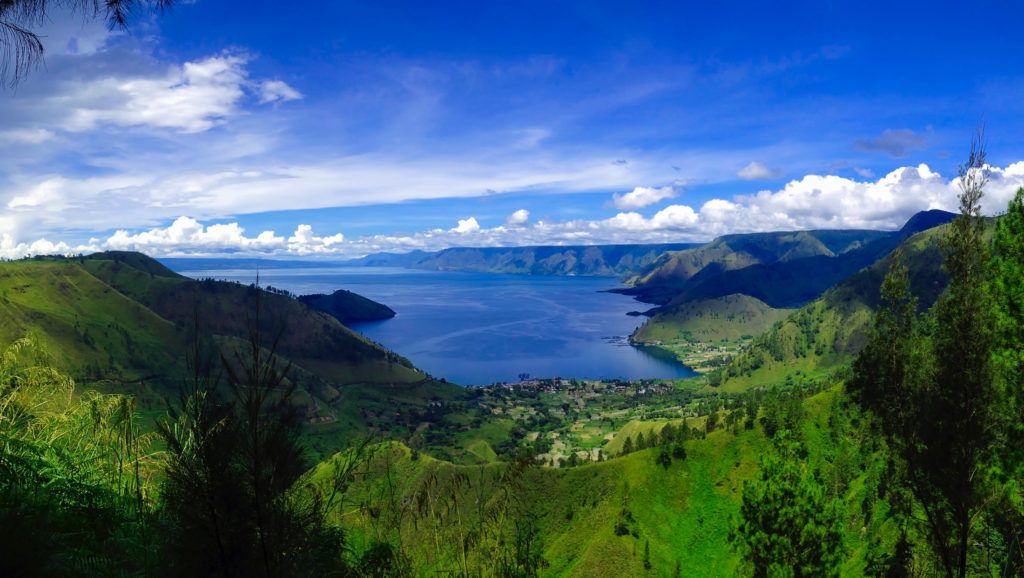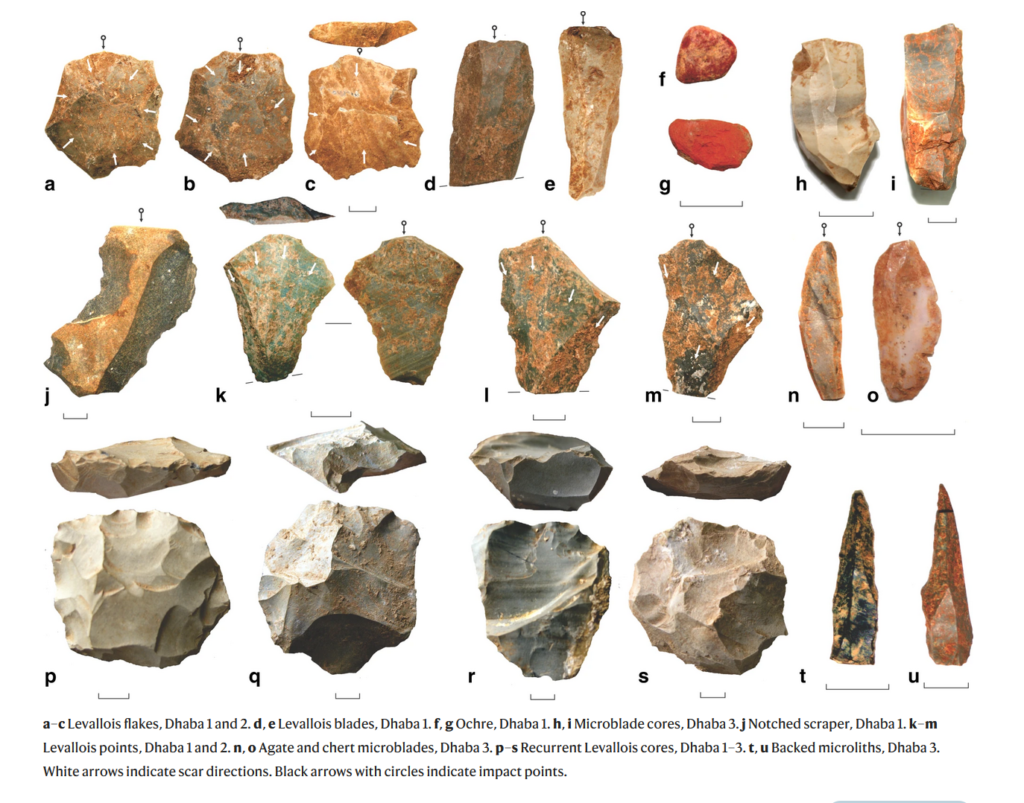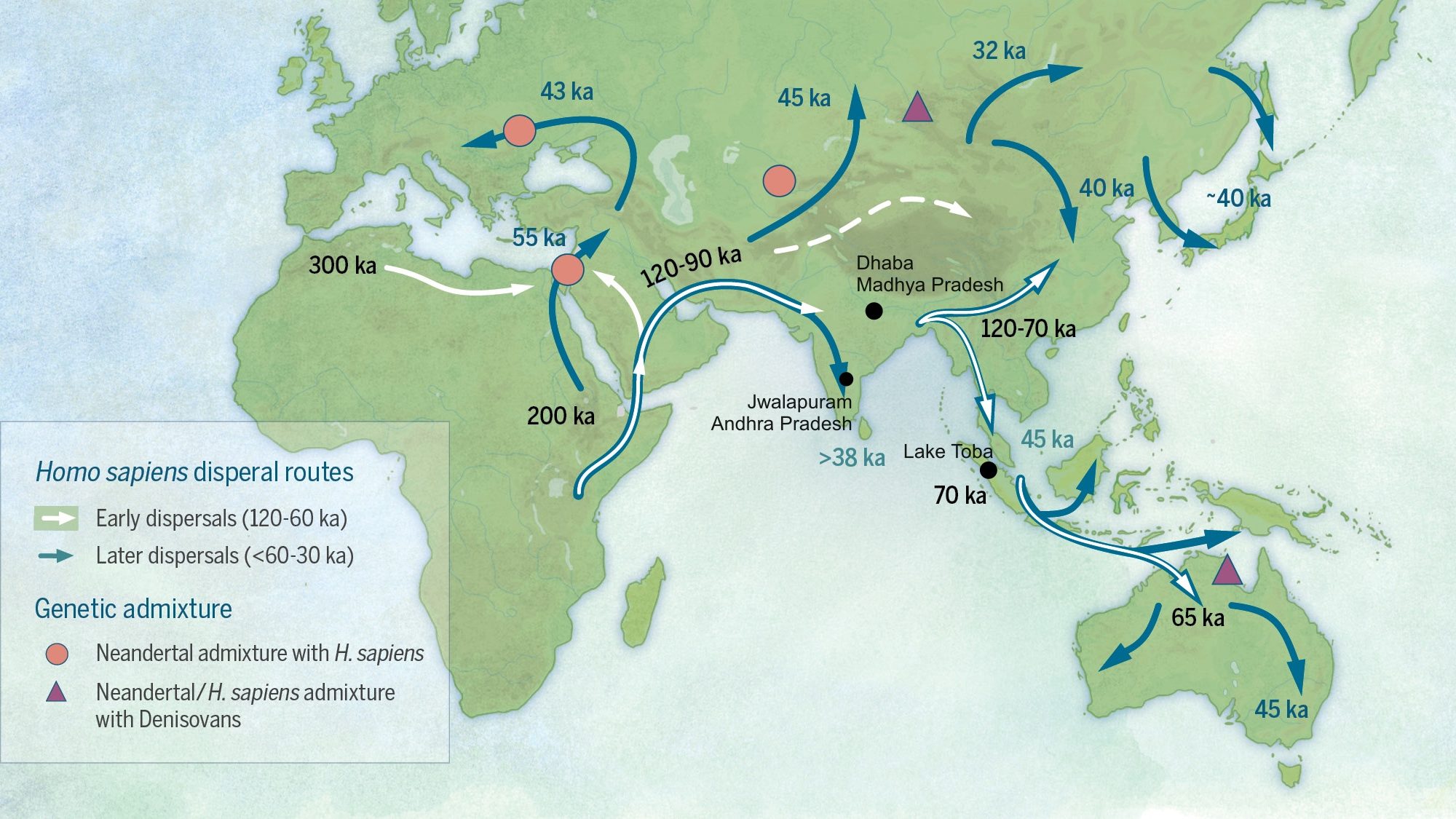Featured image: Katerina Douka, Michelle O’Reilly, Michael D. Petraglia – On the origin of modern humans: Asian perspectives; Science 08 Dec 2017: Vol. 358, Issue 6368, DOI: 10.1126/science.aai9067 [1], CC BY-SA 4.0 (Wikimedia Commons) with minor edits
Paper: Human occupation of northern India spans the Toba super-eruption ~74,000 years ago
Authors: Chris Clarkson, Clair Harris, Bo Li, Christina M. Neudorf, Richard G. Roberts, Christine Lane, Kasih Norman, Jagannath Pal, Sacha Jones, Ceri Shipton, Jinu Koshy, M.C. Gupta, D.P. Mishra, A.K. Dubey, Nicole Boivin & Michael Petraglia
Modern humans evolved around 200,000 years ago in Africa, and dispersed from there to other parts of the globe. The Out of Africa theory is a well-established model that explains the early dispersal of Homo sapiens or modern humans from Africa, into Asia and Oceania. Among the routes proposed is the Southern Route migration from East Africa to the Near East, across the Red Sea, and around Arabia and the Persian Plateau to India, and then finally with modern humans settling in Asia and Australasia.
India’s geographic location is a key piece of this puzzle. Mitochondrial DNA of contemporary populations in India indicate that the country was an important stepping stone in the colonisation of Australasia. However, the timeline for the proposed Southern Route migration is still a matter of debate – could dating the arrival and settlement of modern humans in India provide some clues?
Skeletal remains can help date the presence of past populations, yet there is a marked absence of human fossils between Africa and South Asia. Alternately, cultural artefacts, like stone tools, buried under layers of rock, soil, and ash can provide a proxy for geologic time. Cataclysmic events leave telltale evidence in rock layers. For instance, Lake Toba in North Sumatra, Indonesia, produced the most explosive supervolcano in a two-million year record on Earth. Under the ash of the Toba eruption which occurred roughly 74,000 years ago/ka (where ka represents one-thousand years), might lie the answers of when modern humans arrived in India, and whether they survived the ‘volcanic winter’ – a period of cooler climate, that followed.

A Nature Communications article draws inferences from a rich collection of stone-based tools found at the Dhaba site, on the banks of Son River, Madhya Pradesh (state), India. Near Dhaba, located over 3,000 kilometres (~1864 miles) as the crow flies from Lake Toba, the deposits bear chemical traces of the supervolcano. Sediment samples collected from the river-bank layers above and below the stone-based tools excavated at Dhaba, were subjected to infrared stimulated luminescence (IRSL). IRSL is a technique that can detect when volcanic minerals like potassium-rich feldspar or quartz were last exposed to sunlight or heat, thereby, ‘reflecting’ the age of the soil layers. The IRSL signatures of the samples ranged from roughly 26 ka to 79 ka, providing evidence of long-term human occupation of northern India spanning 80 ka. This new evidence indicates that modern, tool-using humans arrived in India before 80 ka and survived the Toba eruption. The study also cites other research based on genetic and fossil records to corroborate these timelines and concludes that modern human dispersal out of Africa, and more specifically east of Arabia, must have taken place before 65 ka.

The stone-based tools found at Dhaba also help in tracing the transition in ancient human technology and closely resemble those discovered at Jwalapuram, an archaeological site in Andhra Pradesh, South India. Tools transitioned from flakes and cores made of chert, mudstone, and silicified limestone, to retouched quartz or agate blades and scrapers, and finally, smaller stone tools like arrowheads (known as microliths) of agate and chalcedony. Dhaba is a unique locality in South Asia with tool usage that stretches from before the Toba eruption, spanning the Middle Paleolithic through to the microlithic (9,000-4,000 BCE in India). In addition, the Dhaba site bridges the archaeological evidence from Africa, Arabia, and the earliest artefacts from Australia and weaves a more cohesive narrative of modern human dispersal.
What lies beneath: tracing human migrations through stone tools, India by Devayani Khare is licensed under a Creative Commons Attribution-ShareAlike 4.0 International License.

